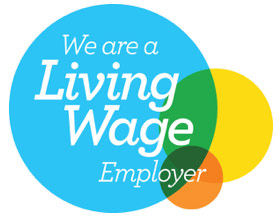
Have you been in a meeting where you couldn’t get a word in? Or where people started having an unrelated conversation? You’re not alone. In business meetings, some people tend to do all the talking, and some people tend to sit quietly on the sidelines. But whether you’re running the meeting or just attending, there is something you can do to change that.
Who’s invited?
First, you need to think about who is attending your meeting, and more importantly, ask yourself who needs to be there. Meetings should involve only the people essential to the discussion. By only inviting the people that are necessary, you’re respecting other people’s time. This is also key for keeping the meeting focused on the topic at hand.
If you’ve been invited to a meeting, think about whether your time would be best spent in this meeting, or whether you are more valuable outside of it. Think about what you can add to this meeting, and if you aren’t sure, ask the person running it what they hope they will gain by you being there.
If you aren’t sold by the answer, use an ‘I’ statement to explain your perspective, such as ‘I feel that I don’t have anything to add to this meeting, and I feel I could use my time better working on this task.’ It’s much harder to argue about how someone is feeling, and using an ‘I’ statement such as ‘I feel’ will focus on your feelings, rather than the organiser’s.
The goal, and the road map
Every single meeting should have a goal. The goal of the meeting is what you are hoping to achieve from having the meeting. This goal should be clearly communicated to your invitees, so that everyone invited knows what the focus of the meeting should be before you start it. It also helps them start to think about how they will contribute.
The goal should be clear and concise. If the goal is delivering information, then think about whether you could email this information instead; even if you have a follow-up meeting afterwards, this will be much more productive if everyone starts with the information they need.
If the goal is something that requires a decision, what is your road map? How are you planning on reaching that decision in the meeting? A vote is often more inclusive than a consensus, which can shut out quieter attendees. Remember, if you trust that you’ll be able to assess that in the meeting, you might find that the loudest contributors are making the decisions.
Your goal and your road map should be listed in the invite to every meeting. This means every single person who attends should know what the goal is, and how you’re going to get there. Start your meeting by reminding them of this; this will help you keep the conversations on track later.
If you’re attending a meeting, ask what the goal is and how the organiser is planning to get you there. This is key to helping you figure out whether it’s a meeting that you’ll be essential to; if you don’t know the goal, how will you know whether it’s a good use of your time?
Taking the lead
So, everyone in the meeting room is essential to the meeting, and you have a clearly defined goal and road map to get you there, but there are still people having conversations that aren’t relevant. How do you get the meeting back on course? Try listen, reflect, and refocus.
To start, you need to listen. There can be a tendency when a conversation goes off topic to stop listening; you might take the opportunity to check your phone, or look at the paperwork. Instead, give the speakers your attention. This communicates that the meeting is still going, and that you are still engaged with it.
From there, you reflect. When there’s an opportunity to speak, interrupt the flow of the conversation and reflect back the emotions that you’ve observed. What this does is indicate to the speakers that you were listening, and also that you’ve recognised the feelings they’re experiencing as valid, even though the discussion might not be.
In practice the interruption might sound like, ‘I can hear that you’re feeling really enthusiastic about this work’ or ‘I can see that you’re feeling a little overwhelmed by this task.’ You’ve observed the emotional reactions that your colleagues are having, and you’ve indicated to them that it has been recognised.
Then remind them of the goal of the meeting, which everyone should be familiar with by now, ‘With the goal of this meeting being ‘X’, I feel it would be relevant to discuss ‘Y’. This is your refocus stage; you're restating the goal of the meeting, and reminding everyone why you’re here. If you’re organising, you might even use this opportunity to ask one of the quieter attendees their opinion.
Listen, reflect and refocus is something that you can model in business meetings whether you’re an organiser or an attendee.
Timekeeping
The final important part of keeping a meeting focused is timekeeping. If there has been an hour allocated for this meeting, it should not last longer than an hour. Respecting people’s time is key for having a successful meeting, where attendees are engaged and not thinking about how much longer it will go on for.
This is another great way to interrupt the flow of conversation that is getting off track. After listening, reflect their feelings and refocus using the time, such as, ‘I’m aware that there are ten minutes left, and we need to accomplish ‘X’ in this time. I feel it might be an appropriate time for a vote.’
If you haven’t reached the goal in the time allocated, you might have identified what is holding you back. Take a break, organise a follow up meeting, and ensure everyone knows what they need to do in the interim.
Ready to try it out?
If you’re used to people dominating business meetings, this may feel a little alien at first. But modelling these skills, particularly listen, reflect, and refocus, will help your other attendees practice them too. Keep going back to the goal, and redirecting attention to your quieter contributors, and your meetings will be a lot less messy.
If you're looking for a platform to help you run focused meetings, we'd suggest Microsoft Teams. Find out how it can help you take your meetings to the level here.
Tweet us @TranscenditUK











